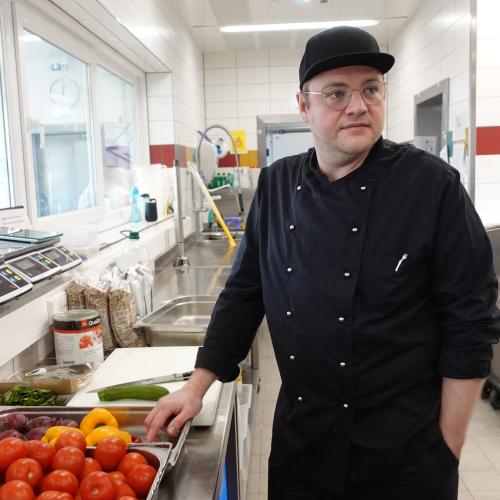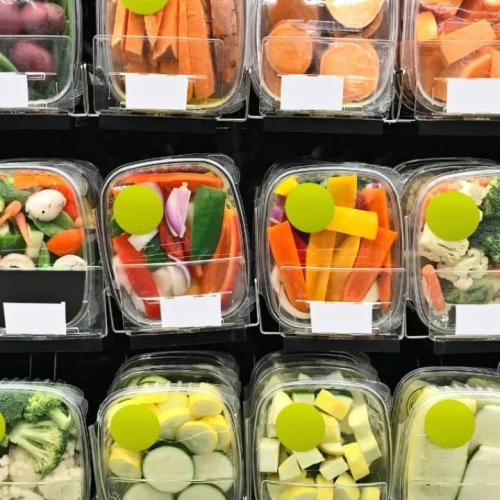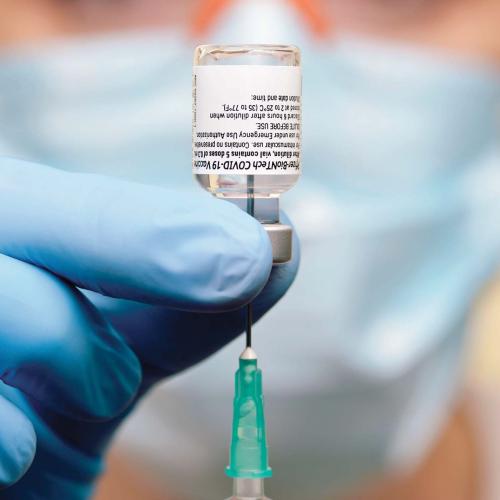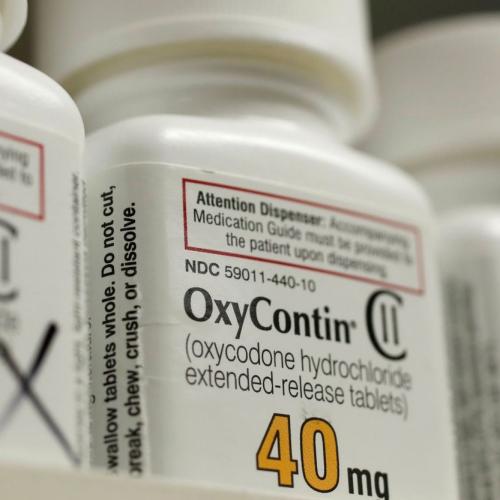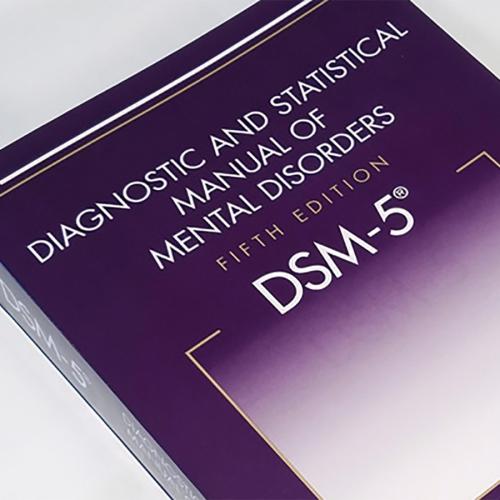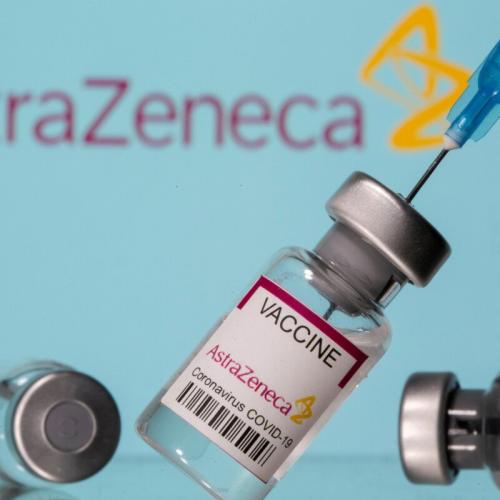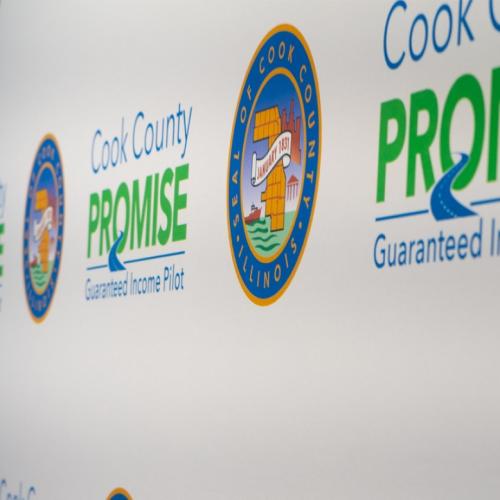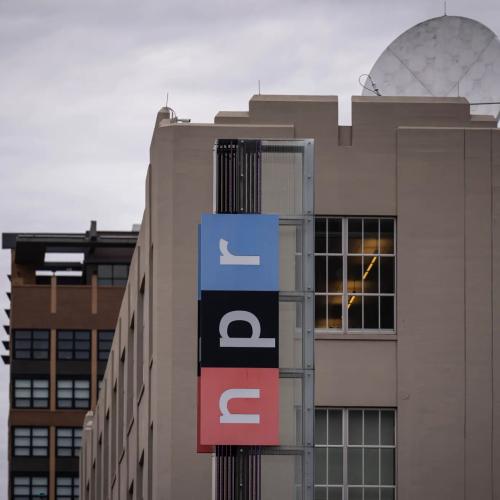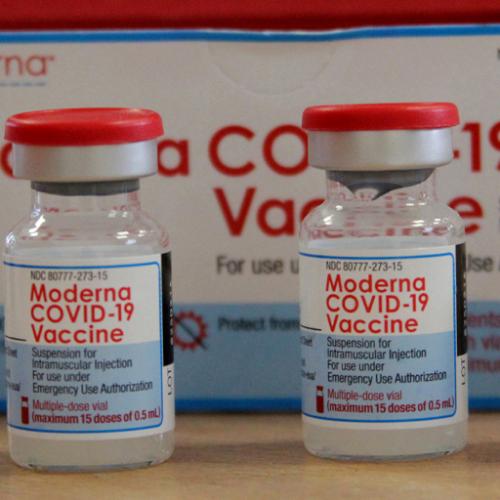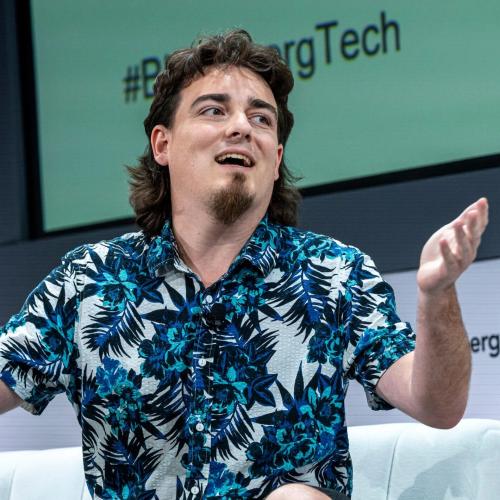Food Corruption News Articles
Below are key excerpts of revealing news articles on food system corruption from reliable news media sources. If any link fails to function, a paywall blocks full access, or the article is no longer available, try these digital tools.
For further exploration, delve into our comprehensive Health and Food Corruption Information Center.
Eating ultraprocessed foods for more than 20% of your daily calorie intake every day could set you on the road to cognitive decline, a new study revealed. "Fifty-eight percent of the calories consumed by United States citizens ... come from ultraprocessed foods," [Dr. Claudia] Suemoto said. Studies have found they can raise our risk of obesity, heart and circulation problems, diabetes and cancer. In fact, men and women who ate the most ultraprocessed foods had a 28% faster rate of global cognitive decline and a 25% faster rate of executive function decline compared with people who ate the least amount of overly processed food, the study found. "The new results are quite compelling and emphasize the critical role for proper nutrition in preserving and promoting brain health and reducing risk for brain diseases as we get older," said Rudy Tanzi, professor of neurology at Harvard Medical School and director of the genetics and aging research unit at Massachusetts General Hospital in Boston. Tanzi said the key problem with ultraprocessed foods is that they are usually very high in sugar, salt and fat, all of which promote systemic inflammation, perhaps the most major threat to healthy aging in the body and brain. "They also replace eating food that is high in plant fiber that is important for maintaining the health and balance of the trillions of bacteria in your gut microbiome," he added, "which is particularly important for brain health and reducing risk of age-related brain diseases like Alzheimer's disease."
Note: For more information on health and well-being, including major cover-ups that affect your health, visit our Health Information Center and explore key news articles from the major media related to health.
A US court this week banned three weedkillers widely used in American agriculture, finding that the Environmental Protection Agency (EPA) broke the law in allowing them to be on the market. The ruling is specific to three dicamba-based weedkillers manufactured by Bayer, BASF and Syngenta, which have been blamed for millions of acres of crop damage and harm to endangered species and natural areas across the midwest and south. Discovery documents turned up in the litigation showed the companies knew that their dicamba weedkillers would probably lead to off-target crop damage. This is the second time a federal court has banned these weedkillers since they were introduced for the 2017 growing season. In 2020, the ninth circuit court of appeals issued its own ban, but months later the Trump administration reapproved the weedkilling products. But a federal judge in Arizona ruled on Monday that the EPA made a crucial error in reapproving dicamba, finding the agency did not post it for public notice and comment as required by law. US district judge David Bury wrote ... that it was a “very serious” violation and that if EPA had done a full analysis, it probably would not have made the same decision. Bury wrote that the EPA did not allow many people who are deeply affected by the weedkiller – including specialty farmers, conservation groups and more – to comment. “The evidence has shown that dicamba cannot be used without causing massive and unprecedented harm to farms as well as endangering plants and pollinators,” said George Kimbrell [with] the Center for Food Safety, which litigated the case.
Note: For more along these lines, see concise summaries of deeply revealing news articles on health and government corruption from reliable major media sources.
Federal regulators announced warnings against two major food and beverage industry groups and a dozen nutrition influencers on Wednesday, as part of a broad action to enforce stricter standards for how companies and social media creators disclose paid advertising. The Federal Trade Commission sent warning letters on Monday to American Beverage, a lobbying group whose members include Coca-Cola and PepsiCo, as well as the Canadian Sugar Institute and a dozen health influencers who collectively have over 6 million followers on TikTok and Instagram. The agency flagged nearly three dozen social media posts that it said failed to clearly disclose who was paying the influencers to promote artificial sweeteners or sugary foods. The action follows a months-long investigation by The Examination and The Washington Post that revealed how the food and beverage industry had enlisted popular dietitians to promote industry-friendly messages on social media posts that often failed to disclose the names of sponsors. Social media marketing ... has been described as the Wild West of advertising. Over $6 billion is expected to be spent on influencer marketing in the United States in 2023. The enforcement action is the first the FTC has taken against major food and beverage industry groups for social media marketing. The agency urged the trade groups and nutrition influencers to remove posts or add proper disclosures and noted that future failures could trigger fines of more than $50,000 for each violation.
Note: Read how cereal giant Kellogg used fake experts to sell its sugary cereals. For more along these lines, see concise summaries of deeply revealing news articles on food system corruption from reliable major media sources.
At the highest point of Los Tres Miradores, a terrifyingly steep urban settlement with soaring views across Peru’s capital, Lima, there is a curious set of large structures that resemble a fleet of ships in the sky. They are so-called “fog catchers.” About 40 of these netted devices, made of high density Raschel polyethylene and spanning several meters wide, are lined up atop a misty mound and linked by a network of tubes that lead to storage containers. Home to a population of more than 10 million, Lima is one of the driest cities in the world. [The nonprofit] El Movimiento Peruanos sin Agua has helped install 600 fog catchers across Lima and a total of 2,000 across Peru, including in the regions of Arequipa, Iquitos and Cuzco. According to [founder Abel] Cruz, one man he supported is even able to raise 1,000 chickens thanks to fog catchers. In June, the project received a significant boost when it signed an agreement with the Mayor of Lima to install 10,000 more fog catchers in the hills surrounding the city in the next four years. The municipality ... said the project has the potential to “reforest, create ecological lungs, ecotourism and at the same time provide water for human consumption, for bio-orchards, botanical gardens, washing clothes, utensils and more.” In Los Tres Miradores, the 40 fog catchers — which were installed in 2021 — provide enough water for 180 families, whether to bathe, clean, drink (after being filtered at home) or to irrigate crops on small garden patches.
Note: Explore more positive stories like this in our comprehensive inspiring news articles archive focused on solutions and bridging divides.
Hollie Fallick looks over Brading on the Isle of Wight, at a patchwork of fields bordered by ancient oaks. She farms with her best friend, Francesca Cooper. The friends ... are part of a growing global movement practising regenerative agriculture – or regen ag for short. “Regenerative agriculture is nature-friendly farming,” says Fallick. “It’s thinking about the health of soil, animals, humans and how they all link together.” On Nunwell home farm, which sits alongside land the pair manage for the Wildlife Trust and produces meat and eggs for their direct-to-consumer business, chickens peck away alongside belted Galloway cows, nomadic pigs graze on grass as well as kale and bean “cover crops” sown to boost nutrients in the soil. The idea is that by following the basic principles of regen ag – not disturbing the soil, keeping it covered, maintaining living roots, growing a diverse range of crops and the use of grazing animals – they can regenerate tired and depleted soil and produce nutritious food. The work, they argue, is urgent. Up to 40% of the world's land is now degraded by industrial and harmful farming methods, according to the UN. Barnes Edwards, co-director of the Garlic Farm ... argues that regen ag farmers recognise the “hideously negative impact” of badly managed livestock farming. But they also argue “it’s the how, not the cow”, and say that cows pooing and trampling in diversely planted fields boosts soil health, micronutrients and attracts insects, birds and butterflies.
Note: Don't miss Kiss the Ground, a powerful documentary on the growing regenerative agriculture movement and its power to build global community, reverse the many environmental crises we face, and revive our connection to the natural world. Explore more positive stories like this in our comprehensive inspiring news articles archive focused on solutions and bridging divides.
New York state on Friday became the first state in the nation to pass legislation restricting neonicotinoid pesticides (neonics) that are toxic to bees and other pollinators and wildlife. The Birds and Bees Protection Act would eliminate 80 to 90% of the neonics used in New York each year by banning applications that are either easily replaceable or do not give an economic boost to farmers. "Every year for the past decade, New York beekeepers have lost more than 40% of their bee colonies–largely due to neonic pesticides," bill sponsor State Senator Brad Hoylman-Sigal said in a statement. "Today, in this landmark victory for our pollinators, economy, and farming industry, New York is working to reverse that trend." The bill ... bans the use of neonics to coat corn, soybean, and wheat seeds as well as for lawns and gardens. Neonics are a class of pesticides that work by attacking the nervous systems of insect pests. A lethal dose will cause paralysis and death, while non-lethal effects include memory, immune, navigation, and fertility problems. They are one of the deadliest pesticides out there, yet they are also the leading insecticide used in the U.S. This is a problem because about 95% of neonics used to coat seeds don't enter the plant at all, but instead spread into the environment via the soil, where they do not break down easily. They also harm the development of birds and mammals; and studies have linked ingredients of neoicotinoid insecticides with adverse human health outcomes as well.
Note: For more along these lines, see concise summaries of deeply revealing news articles on food system corruption and health from reliable major media sources.
Microplastics have infiltrated every part of the planet. One study estimated that there are around 24.4 trillion fragments of microplastics in the upper regions of the world's oceans. But they aren't just ubiquitous in water – they are spread widely in soils on land too and can even end up in the food we eat. Unwittingly, we may be consuming tiny fragments of plastic with almost every bite we take. In 2022, analysis by the Environmental Working Group, an environmental non-profit, found that sewage sludge has contaminated almost 20 million acres (80,937sq km) of US cropland with per- and polyfluoroalkyl substances (PFAS), often called "forever chemicals", which are commonly found in plastic products and do not break down under normal environmental conditions. Sludge is commonly used as organic fertiliser in the US and Europe. Due to this practice ... between 31,000 and 42,000 tonnes of microplastics, or 86 trillion to 710 trillion microplastic particles, contaminate European farmland each year. Plastic particles can also contaminate food crops directly. A 2020 study found microplastics and nanoplastics in fruit and vegetables sold by supermarkets and in produce sold by local sellers. Crops absorb nanoplastic particles from surrounding water and soil through tiny cracks in their roots. Chemicals found in plastic have been linked to cancer, heart disease and poor fetal development. High levels of ingested microplastics may also cause cell damage which could lead to inflammation and allergic reactions.
Note: There seems to be no part of the planet that is unaffected by the pervasiveness of microplastics, from being found in human veins, human lungs, flying insects, and in 90% of table salt, to heavily polluting our skies and now spiraling around the globe through Earth’s atmosphere. Read more on simple ways that you can reduce microplastic pollution and consumption in your life, and support the many organizations making a meaningful difference to address this issue.
In Wisconsin and Ohio, farmers are dumping thousands of gallons of fresh milk into lagoons and manure pits. An Idaho farmer has dug huge ditches to bury 1 million pounds of onions. And in South Florida, a region that supplies much of the Eastern half of the United States with produce, tractors are crisscrossing bean and cabbage fields, plowing perfectly ripe vegetables back into the soil. Many of the nations largest farms ... are being forced to destroy tens of millions of pounds of fresh food that they can no longer sell. The closing of restaurants, hotels and schools has left some farmers with no buyers for more than half their crops. And even as retailers see spikes in food sales to Americans who are now eating nearly every meal at home, the increases are not enough to absorb all of the perishable food that was planted weeks ago and intended for schools and businesses. The amount of waste is staggering. The nations largest dairy cooperative, Dairy Farmers of America, estimates that farmers are dumping as many as 3.7 million gallons of milk each day. A single chicken processor is smashing 750,000 unhatched eggs every week. Many farmers say they have donated part of the surplus to food banks. But there is only so much perishable food that charities ... can absorb. And the costs of harvesting, processing and then transporting produce and milk to food banks or other areas of need would put further financial strain on farms that have seen half their paying customers disappear.
Note: For more along these lines, see concise summaries of deeply revealing news articles on food system corruption and the coronavirus pandemic from reliable major media sources.
In 2013, the European Union called for a temporary suspension of the most commonly used neonicotinoid-based products on flowering plants, citing the danger posed to bees — an effort that resulted in a permanent ban in 2018. In the U.S., however, industry dug in, seeking not only to discredit the research but to cast pesticide companies as a solution to the problem. Lobbying documents and emails ... show a sophisticated effort over the last decade by the pesticide industry to obstruct any effort to restrict the use of neonicotinoids. Bayer and Syngenta, the largest manufacturers of neonics, and Monsanto, one of the leading producers of seeds pretreated with neonics, cultivated ties with prominent academics ... and other scientists who had once called for a greater focus on the threat posed by pesticides. A study published in peer-reviewed journal PLOS One found that the American landscape has become 48 times more toxic to insects since the 1990s, a shift largely fueled by the rising application of neonics. “Generally, we see the U.S. waiting longer than the EU to take action on a variety of pesticides and other chemicals,” said [Willa] Childress ... with Pesticide Action Network North America. Part of the divergence, Childress continued, stems from a regulatory system in the U.S. that assumes chemical products are generally safe until proven hazardous. In contrast, the EU tends to use the “precautionary principle,” removing products that may cause harm.
Note: Merchants of Poison: How Monsanto Sold the World on a Toxic Pesticide is a recent and comprehensive analysis of documents released in litigation against Monsanto and their dangerous use of glyphosate. These revealing documents expose years of pesticide industry disinformation, attacks on scientists and journalists, and Monsanto’s deep influence on US regulatory agencies to manipulate science and prioritize profits over public health. For more along these lines, see concise summaries of deeply revealing news articles on corruption in science and in the food system from reliable major media sources.
More than 12 million pounds of medically important antibiotics sold in this country are not for use in humans; they're for livestock. And the antibiotics are driving the spread of drug-resistant bacteria in the animals that can get passed on to us through food. Yet it's almost impossible to get on the farms to conduct inspections and stop infection outbreaks from spreading, even for public health officials. In 2015, Washington state epidemiologist Scott Lindquist investigated an outbreak of antibiotic resistant salmonella tied to roaster pigs. The salmonella was resistant to antibiotics. Lindquist traced the cause of the outbreak to a slaughterhouse. "We come in and we find the bacteria, essentially everywhere," [said Lindquist]. "So I want to go back to the farms and I wanna sample the pigs at the farm." But to his surprise, Lindquist, who was conducting the investigation, was flatly turned down. Thwarted, he says, by the National Pork Producers Council, the lead lobbying group for the $23 billion pork industry. They sent Lindquist a letter denying him access to the farms. Even federal inspectors have trouble getting on farms. They are not allowed on a farm to look for bacteria that make people sick without the farmer's permission. Farmers started using antibiotics decades ago ... to make animals grow faster with less food. In 2017, the Food and Drug Administration told farmers to stop using antibiotics in animals for growth purposes, but ... they are permitted to use them for disease prevention, and there are no reporting requirements.
Note: For lots more, see this informative article. For more along these lines, see concise summaries of deeply revealing news articles on food system corruption from reliable major media sources.
Monsanto operated a fusion center to monitor and discredit journalists and activists, and targeted a reporter who wrote a critical book on the company, documents reveal. The records reviewed by the Guardian show Monsanto adopted a multi-pronged strategy to target Carey Gillam, a Reuters journalist who investigated the companys weedkiller and its links to cancer. Monsanto, now owned by the German pharmaceutical corporation Bayer, also monitored a not-for-profit food research organization through its intelligence fusion center, a term that the FBI and other law enforcement agencies use for operations focused on surveillance and terrorism. The documents, mostly from 2015 to 2017, were disclosed as part of an ongoing court battle on the health hazards of the companys Roundup weedkiller. Monsanto planned a series of actions to attack a book authored by Gillam prior to its release, including ... directing industry and farmer customers on how to post negative reviews. Monsanto paid Google to promote search results for Monsanto Glyphosate Carey Gillam that criticized her work. Monsanto fusion center officials wrote a lengthy report about singer Neil Youngs anti-Monsanto advocacy. The internal records dont offer significant detail on the activities or scope of the fusion center, but ... government fusion centers have increasingly raised privacy concerns surrounding the way law enforcement agencies collect data, surveil citizens and share information.
Note: For more along these lines, see concise summaries of deeply revealing news articles on corporate corruption and media manipulation from reliable major media sources.
At the age of 46, DeWayne Johnson is not ready to die. But with cancer spread through most of his body, doctors say he probably has just months to live. Now Johnson, a husband and father of three in California, hopes to survive long enough to make Monsanto take the blame for his fate. Johnson will become the first person to take the global seed and chemical company to trial on allegations that it has spent decades hiding the cancer-causing dangers of its popular Roundup herbicide products and his case has just received a major boost. Last week Judge Curtis Karnow issued an order clearing the way for jurors to consider not just scientific evidence related to what caused Johnsons cancer, but allegations that Monsanto suppressed evidence of the risks of its weed killing products. The internal correspondence noted by Johnson could support a jury finding that Monsanto has long been aware of the risk that its glyphosate-based herbicides are carcinogenic ... but has continuously sought to influence the scientific literature to prevent its internal concerns from reaching the public sphere and to bolster its defenses in products liability actions, Karnow wrote. Johnsons case ... is at the forefront of a legal fight against Monsanto. Some 4,000 plaintiffs have sued Monsanto alleging exposure to Roundup caused them, or their loved ones, to develop non-Hodgkin lymphoma (NHL).
Note: As major lawsuits like this one against Monsanto begin to unfold, the EPA continues to use industry studies to declare Roundup safe while ignoring independent scientists. A recent independent study published in a scientific journal found a link between glyphosate and gluten intolerance. Internal FDA emails suggest that the food supply contains far more glyphosate than government reports indicate. For more along these lines, see concise summaries of deeply revealing news articles on food system corruption and health.
A reputable-sounding nonprofit organization released a report attacking the organic food industry in April 2014. The 30-page report by Academics Review, described as a non-profit led by independent academic experts in agriculture and food sciences, found that consumers were being duped into spending more money for organic food. The [group's] press release ends on this note: Academics Review has no conflicts-of-interest associated with this publication, and all associated costs for which were paid for using our general funds without any specific donor influence or direction. What was not mentioned in the report, the news release or on the website: Executives for Monsanto Co., the worlds leading purveyor of agrichemicals and genetically engineered seeds, along with key Monsanto allies, engaged in fund raising for Academics Review, collaborated on strategy and even discussed plans to hide industry funding, according to emails obtained by U.S. Right to Know. Jay Byrne, former head of communications at Monsanto ... offered to act as a commercial vehicle to help find corporate funding for Academics Review. In March 2016, Monica Eng reported ... on documents showing that Monsanto paid Professor Bruce Chassy more than $57,000 over a 23-month period to travel, write and speak about GMOs - money that was not disclosed to the public. The money was part of at least $5.1 million in undisclosed money Monsanto sent through the University of Illinois Foundation.
Note: Monsanto has reportedly pushed fake science in other circumstances as well. Major lawsuits are beginning to unfold over Monsanto's lies to regulators and the public on the dangers of its products, most notably Roundup. Yet the EPA continues to use industry studies to declare Roundup safe while ignoring independent scientists. For more along these lines, see concise summaries of deeply revealing news articles on food system corruption and health.
People who drink diet sodas daily have three times the risk of stroke and dementia compared to people who rarely drink them, researchers reported Thursday. It's yet another piece of evidence that diet drinks are not a healthy alternative to sugary drinks, and suggests that people need to limit both, doctors said. The researchers, led by Matthew Pase ... and colleagues, studied more than 4,000 people for their report, published in the journal Stroke. "We found that those people who were consuming diet soda on a daily basis were three times as likely to develop both stroke and dementia within the next 10 years as compared to those who did not consume diet soda," Pase told NBC News. "Our study provides further evidence to link consumption of artificially sweetened beverages with the risk of stroke," the team wrote. "To our knowledge, our study is the first to report an association between daily intake of artificially sweetened soft drink and an increased risk of both all-cause dementia and dementia because of Alzheimer's disease." The team did not find the same risk for sugar-sweetened beverages. But they found other troubling signs. "Those who more frequently consume sugary beverages such as fruit juices and sodas had greater evidence of accelerated brain aging such as overall smaller brain volumes, they had poorer memory function and they also had smaller hippocampus, which is an area of the brain important for memory consolidation," Pase said.
Note: Previous research has linked diet soda with abdominal fat gain, as well as found a variety of serious health risks to be associated with the popular artificial sweetener aspartame. For more along these lines, see concise summaries of deeply revealing health news articles from reliable major media sources.
Gulping down an artificially sweetened beverage not only may be associated with health risks for your body, but also possibly your brain, a new study suggests. Artificially sweetened drinks, such as diet sodas, were tied to a higher risk of stroke and dementia in the study, which was published in the American Heart Association's journal Stroke. The researchers analyzed how many sugary beverages and artificially sweetened soft drinks each person in the two different age groups drank, at different time points, between 1991 and 2001. Then, they compared that with how many people suffered stroke or dementia over the next 10 years. Compared to never drinking artificially sweetened soft drinks, those who drank one a day were almost three times as likely to have an ischemic stroke, caused by blocked blood vessels, the researchers found. They also found that those who drank one a day were nearly three times as likely to be diagnosed with dementia. Separate previous studies have shown an association between the intake of sugar-sweetened beverages and adverse health effects, such as type 2 diabetes, obesity, heart disease, stroke, and possibly even heart failure.
Note: Explore lots more about the risks and dangers of aspartame in this excellent article. For more along these lines, see concise summaries of deeply revealing news articles on food system corruption and health.
A study in the journal Stroke showed a correlation between drinking diet soda and both stroke and dementia: people who drank at least one diet soda a day were three times as likely to have a stroke or develop dementia as those who avoided the beverages. Previous research had already uncovered a possible link with higher stroke risk. The findings in this study add some support to those results. The link with dementia, however, is new, and at minimum is enough cause for concern that it's worth studying further. Why might diet sodas contribute to these risks? Diet sodas are designed to trick the brain into thinking its getting an extra dose of glucose (the brains fuel), but eventually the trick is on us because the brain adapts to not receiving the added glucose by overcompensating in other ways (leading to a variety of effects still under investigation). Diet sodas could imbalance the bacterial jungle in our guts - the microbiome - causing unpredictable results. Since theres a bacterial superhighway from gut to brain, which we know interacts with key neurotransmitters, this theory may eventually tell us more of a much bigger brain story. This study didnt narrow down the exact types of artificial sweeteners that were consumed, so its an open question how one may have affected the brain differently than another. In the meantime, curtailing how much of any artificial sweetener you ingest, along with added sugar, is a reasonable position to take.
Note: Artificial sweeteners have also been connected with blood sugar level spikes, obesity, and diabetes. There is undeniable evidence that aspartame is toxic to the human body. For more along these lines, see concise summaries of deeply revealing news articles on food industry corruption and health.
Law firms around the United States are lining up plaintiffs for what they say could be "mass tort" actions against agrichemical giant Monsanto Co that claim the company's Roundup herbicide has caused cancer in farm workers and others exposed to the chemical. The latest lawsuit was filed Wednesday in Delaware. The lawsuit is similar to others filed last month in New York and California accusing Monsanto of long knowing that the main ingredient in Roundup, glyphosate, was hazardous. Monsanto "led a prolonged campaign of misinformation to convince government agencies, farmers and the general population that Roundup was safe," the lawsuit states. The litigation follows the World Health Organization's declaration in March that there was sufficient evidence to classify glyphosate as "probably carcinogenic to humans." "We can prove that Monsanto knew about the dangers of glyphosate," said Michael McDivitt, whose Colorado-based law firm is putting together cases for 50 individuals. Roundup ... brought Monsanto $4.8 billion in revenue in its fiscal 2015. But questions about Roundup's safety have dogged the company for years. Attorneys who have filed or are eying litigation cited strong evidence that links glyphosate to non-Hodgkin lymphoma. Monsanto is also fending off claims over its past manufacturing of polychlorinated biphenyls (PCBs), which the WHO classifies as known carcinogens. At least 700 lawsuits against Monsanto or Monsanto-related entities are pending.
Note: It's interesting to note that a Google search shows almost no major media picked up this key news. Read how the EPA used industry studies while ignoring independent studies to declare Roundup safe. Read also an excellent mercola.com article titled "GMO cookie is crumbling." Monsanto is trying to stop the state of California from listing Glyphosate as carcinogenic. For more along these lines, see concise summaries of deeply revealing GMO news articles from reliable major media sources.
Monsanto Co.s undisclosed recruitment of scientists from Harvard University, Cornell University and three other schools to write about the benefits of plant biotechnology is drawing fire from opponents. Monsanto says its in regular contact with public-sector scientists as it tries to elevate public dialog on genetically modified organisms, or GMOs. U.S. Right to Know, a nonprofit group funded by the Organic Consumers Association that obtained e-mails under the Freedom of Information Act, says correspondence revealing Monsantos actions shows the corporate control of science and how compliant some academics are. The articles have become the latest flashpoint in an information war being waged over plant biotechnology. The articles in question appeared on the Genetic Literacy Projects website in a series called GMO - Beyond the Science. Eric Sachs, who leads Monsantos scientific outreach, wrote to eight scientists to pen a series of briefs aimed at influencing public policy, GM crop regulation and consumer acceptance. Five of them obliged. University of Florida Professor Kevin Folta said he agreed to write Anti-GMO Activism and Its Impact on Food Security because communicating science to the public is his job. Folta has faced public criticism since the New York Times ... reported last month about his communications with Monsanto and a $25,000 donation to the science communication program he runs.
Note: For more along these lines, see concise summaries of deeply revealing news articles about the corruption of science and the controversy surrounding GMOs.
Michael Specter's recent articles bashing Vandana Shiva and the labeling of genetically engineered foods (Seeds of Doubt and The Problem with G.M.O. Labels) in the New Yorker are the latest high-profile pro-GMO articles that fail to engage with the fundamental critique of genetically engineered food crops in US soil today: rather than reduce pesticide inputs GMOs are causing them to skyrocket in amount and toxicity. Setting the record straight, Dr. Ramon J. Seidler, Ph.D., former Senior Scientist, Environmental Protection Agency, has recently published a well-researched article documenting the devastating facts, "Pesticide Use on Genetically Engineered Crops," in Environmental Working Group's online AgMag. Dr. Seidler's article cites and links recent scientific literature and media reports, and should be required reading for all journalists covering GMOs, as well as for citizens generally to understand why their right to know if food is genetically engineered is so important. Over 99% of GMO acreage is engineered by chemical companies to tolerate heavy herbicide (glyphosate) use and/or produce insecticide (Bt) in every cell of every plant over the entire growing season. The result is massive selection pressure that has rapidly created pest resistance - the opposite of integrated pest management. Predictably ... we now have huge swaths of the country infested with "superweeds" and "superbugs" resistant to glyphosate and Bt, meaning more volume of more toxic pesticides are being applied.
Note: The negative health impacts of Monsanto's Roundup are well known. Major lawsuits are building over Monsanto's lies to regulators and the public about the safety of glyphosate. For more along these lines, see concise summaries of deeply revealing GMO news articles from reliable major media sources.
Most everyone who has ever selected their fruits and vegetables from the "organic" section while grocery shopping probably thought they were doing something good for their bodies and the environment. Yet the question of whether organic foods are in fact more nutritious than their conventionally grown counterparts remains a topic of heated scientific debate. On [July 14], the British Journal of Nutrition published research that disputed the notion that organic foods are essentially no more healthful than conventional foods. After reviewing 343 studies on the topic, researchers in Europe and the United States concluded that organic crops and organic-crop-based foods contained higher concentrations of antioxidants on average than conventionally grown foods. At the same time, the researchers found that conventional foods contained greater concentrations of residual pesticides and the toxic metal cadmium. "This shows clearly that organically grown fruits, vegetables and grains deliver tangible nutrition and food safety benefits," said study coauthor Charles Benbrook, a research professor at Washington State University's Center for Sustaining Agriculture and Natural Resources.
Note: Read more about this landmark study in this article.
Important Note: Explore our full index to revealing excerpts of key major media news articles on several dozen engaging topics. And don't miss amazing excerpts from 20 of the most revealing news articles ever published.







